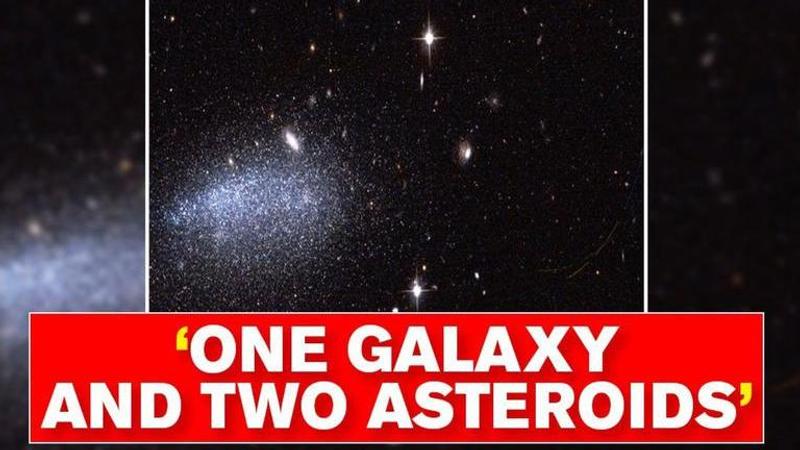Published 12:12 IST, July 4th 2020
NASA’s Hubble Space Telescope captures 'one galaxy and two asteroids'
NASA’s Hubble Space Telescope recently shared an image portraying the sparkling stars of a ‘dwarf galaxy’ located around 15 million light-years away.

NASA’s Hubble Space Telescope recently shared an image portraying the sparkling stars of a ‘dwarf galaxy’ located around 15 million light-years away. While in the picture other galaxies’ appear to be ‘sprinkled across the frame’, the scientists noticed that towards the lower right corner of the frame, two elongated streaks, trails of asteroids, are faintly visible. While sharing the image on Twitter, the Hubble space informed that the ‘citizen scientists’ captured ‘one galaxy and two asteroids’.
The Hubble Space also wrote, “At first sight, the image portrays the sparkling stars of the red dwarf galaxy AGC111977. But, towards the lower right corner of the frame, the trails of two asteroids are visible”.
Hubble Asteroid Hunter program
According to a press note released by the European Space Agency, the Hubble observed the trails of the asteroids in the solar system, which were crossing their ways in the foreground of the stars and galaxies. The ‘citizens scientists’, who are volunteers who inspect images from the iconic space telescope as part of the Hubble Asteroid Hunter Citizens Science project, uncovered the two asteroids that are located at different distances from us. The researchers also revealed that asteroids intersecting streaks suggests that they actually do not collide.
As per the press release, the observation was part Hubble Asteroid Hunter program in collaboration with ESA and the Zooniverse. The 'citizen scientists' volunteered to identify asteroids that had been serendipitously observed by the Hubble Space Telescope. Around 9,000 volunteers from around the globe provided two million classifications of 140,000 composite Hubble images, finding 1,500 asteroid trails.
The ESA authorities also informed that “the team is working to identify the asteroids that were uncovered as part of the project—including the two pictured in this image—to possibly match them with known asteroids in the Minor Planet Center database, and calculate their distances from us”.
Updated 12:12 IST, July 4th 2020



